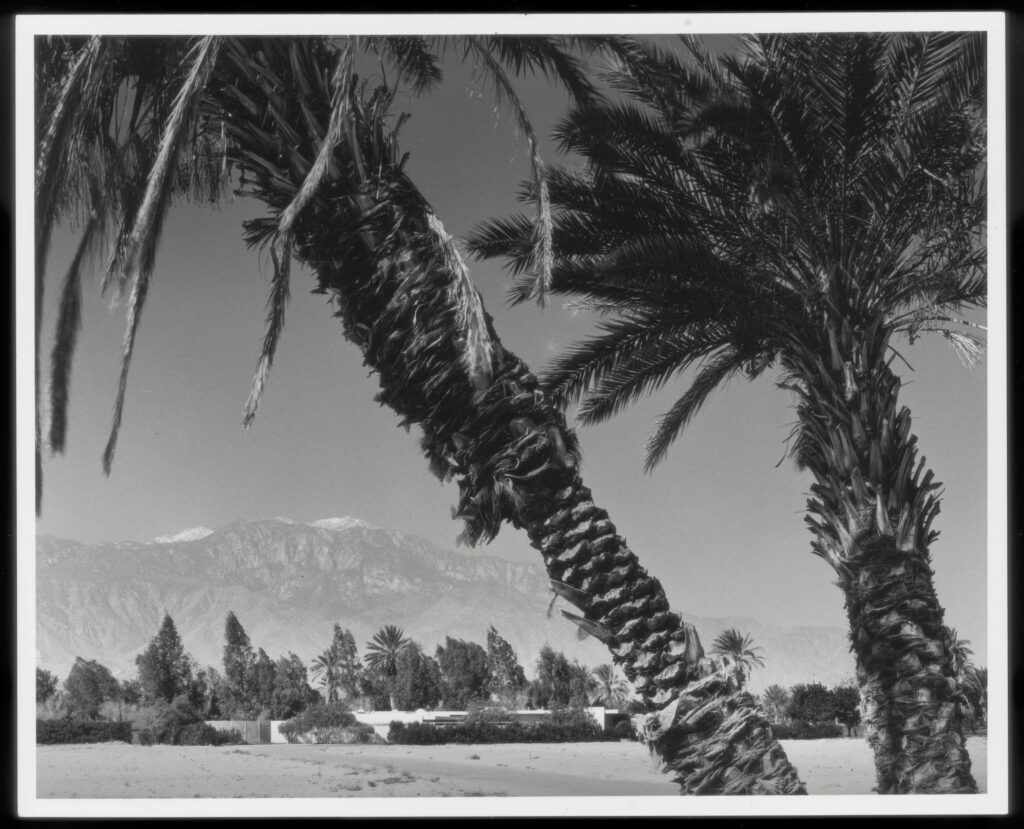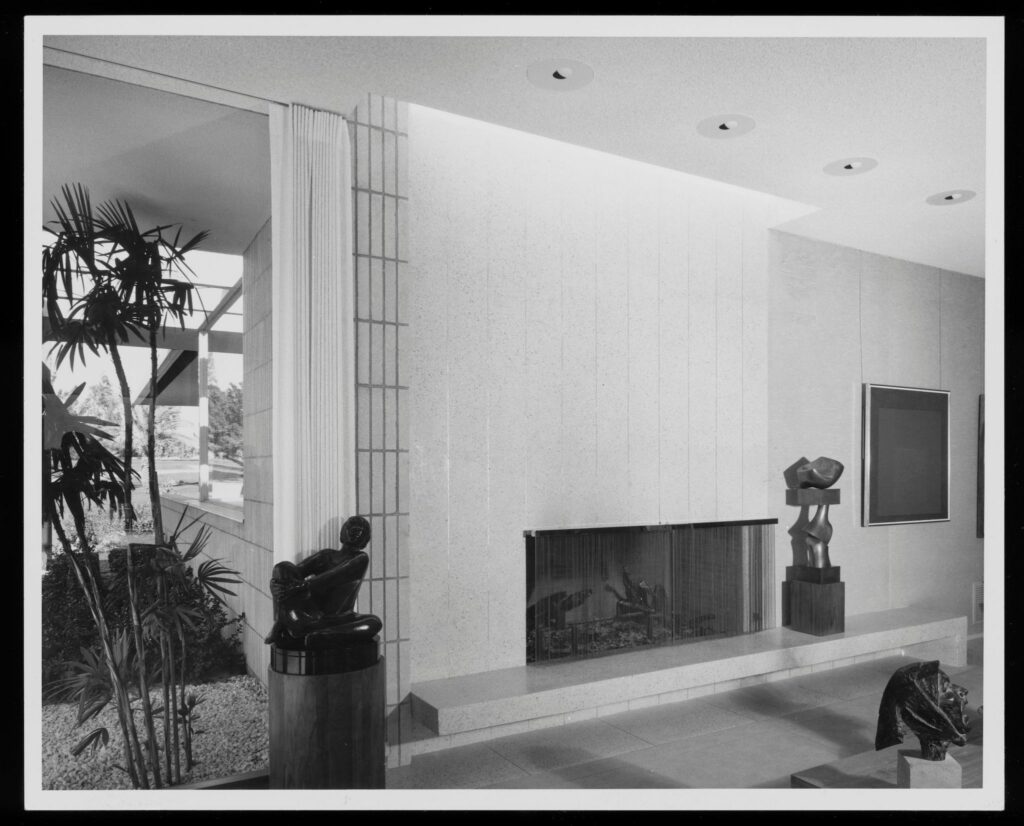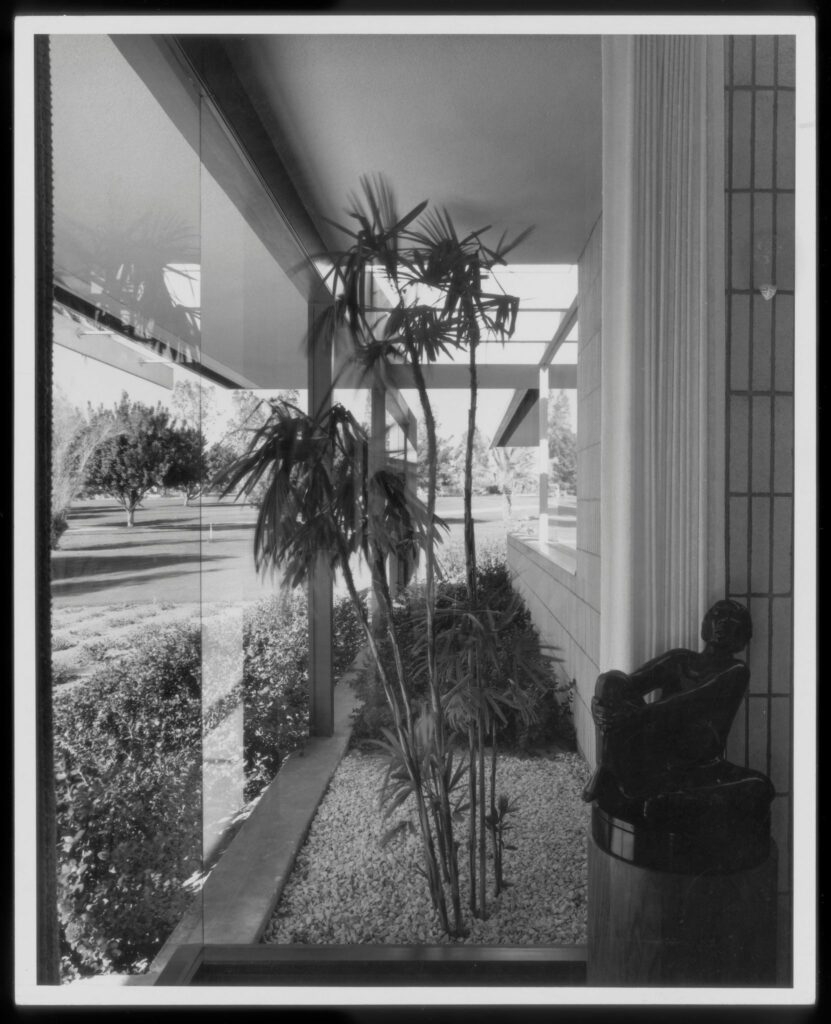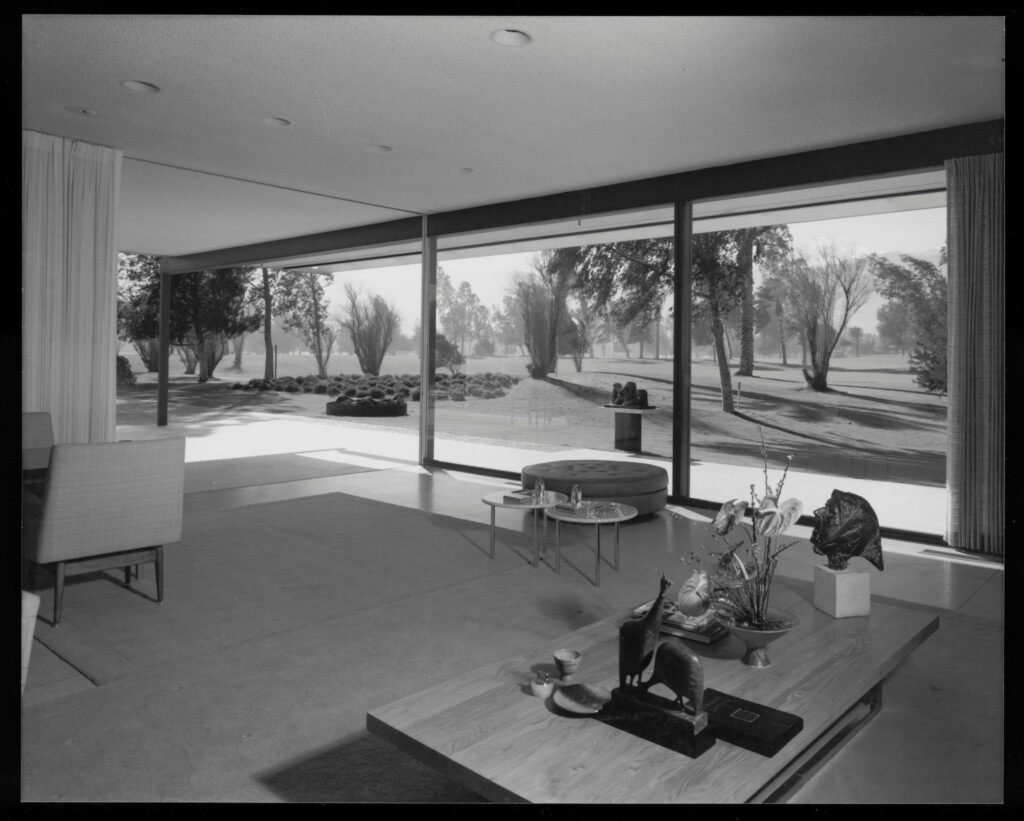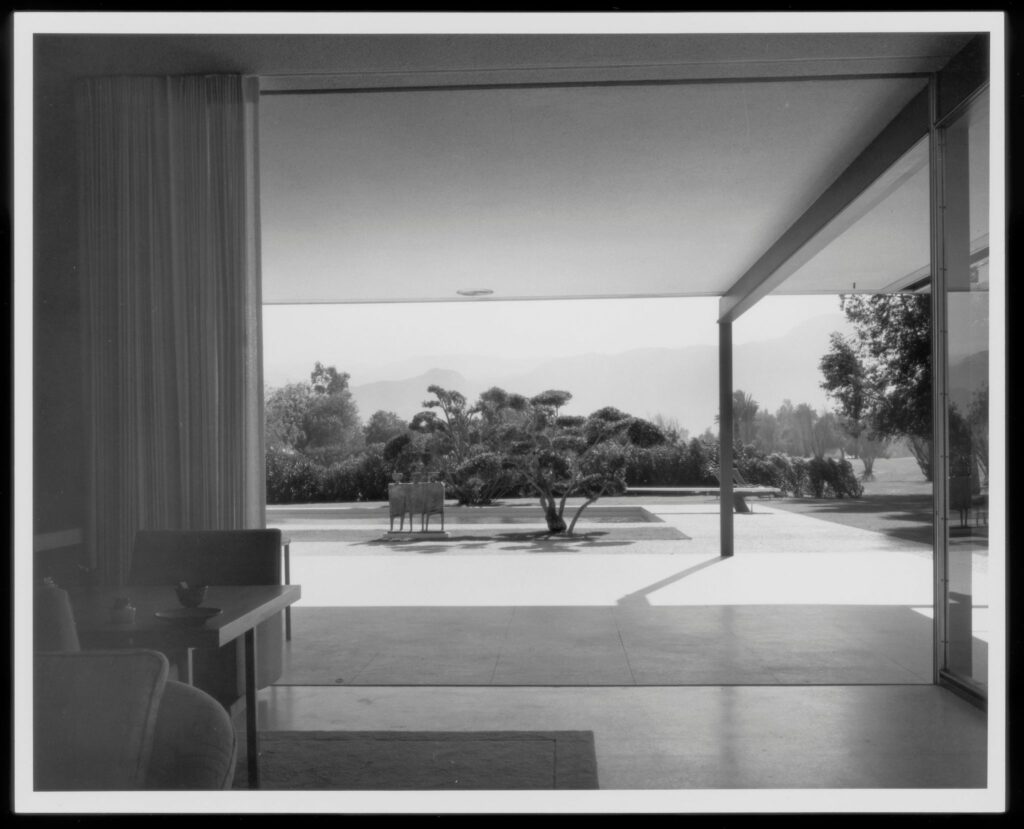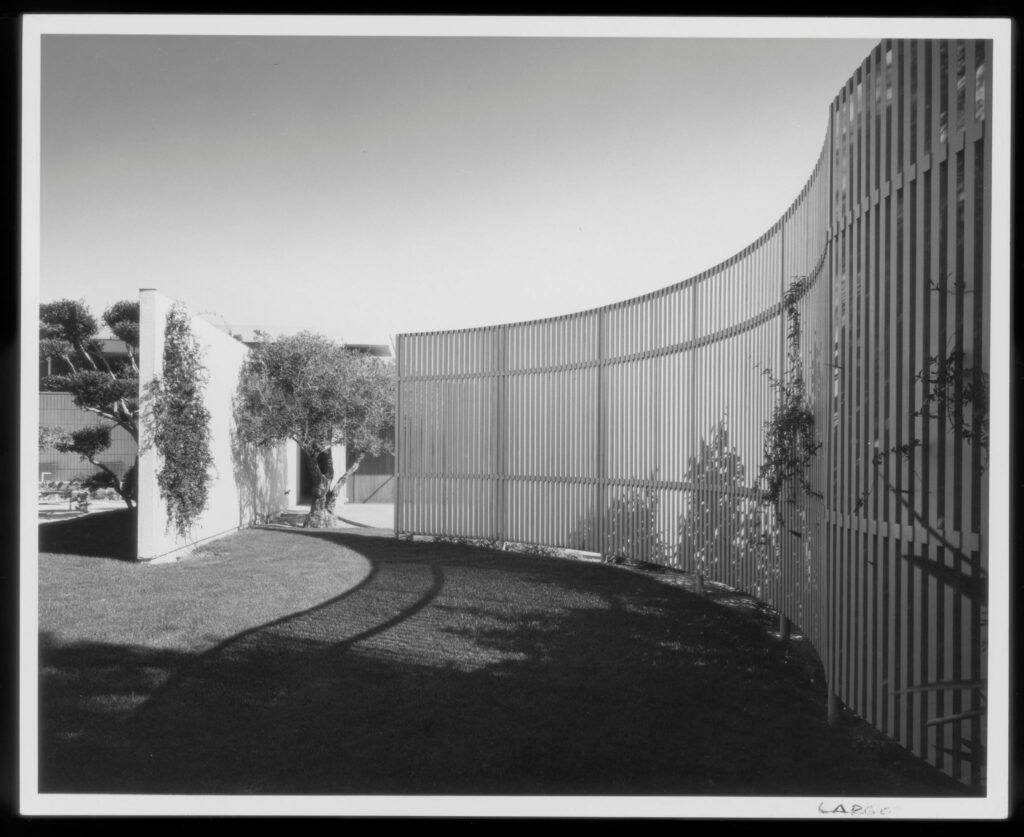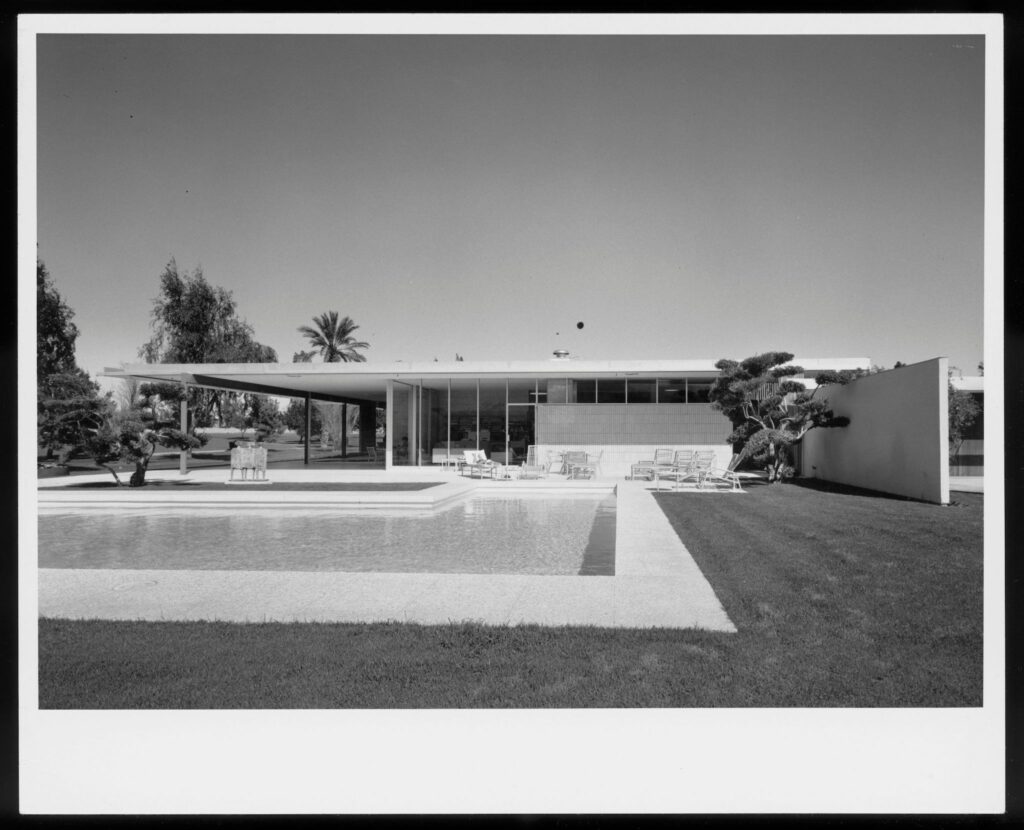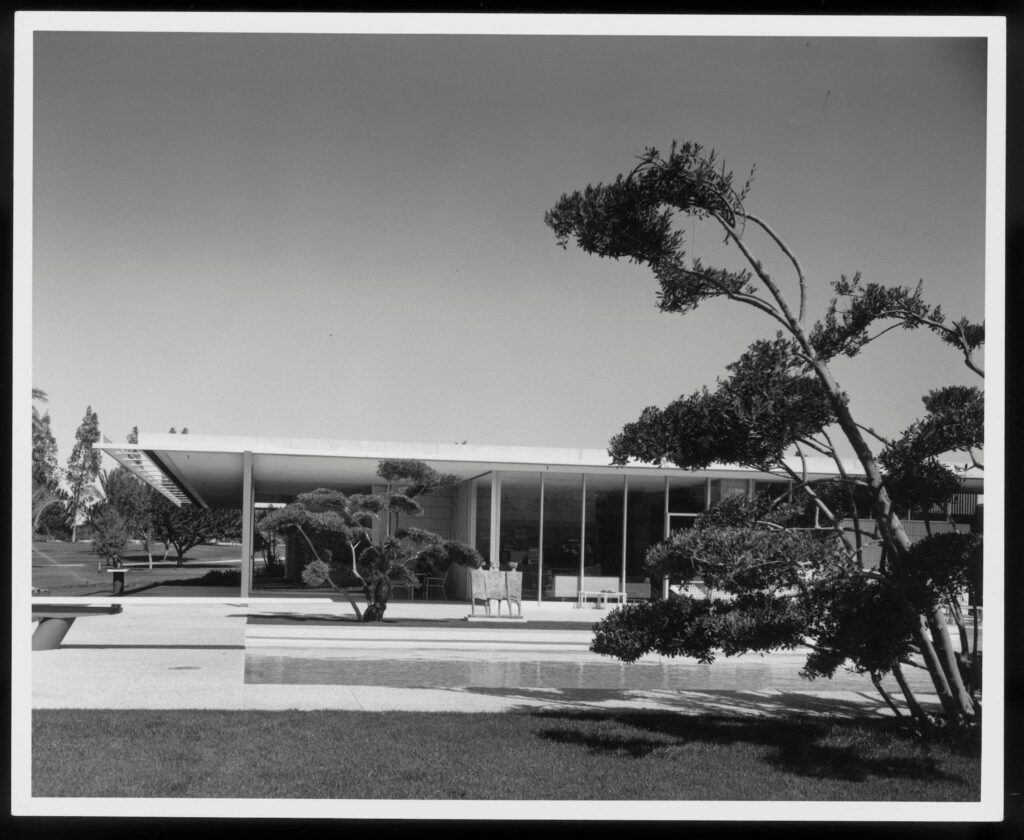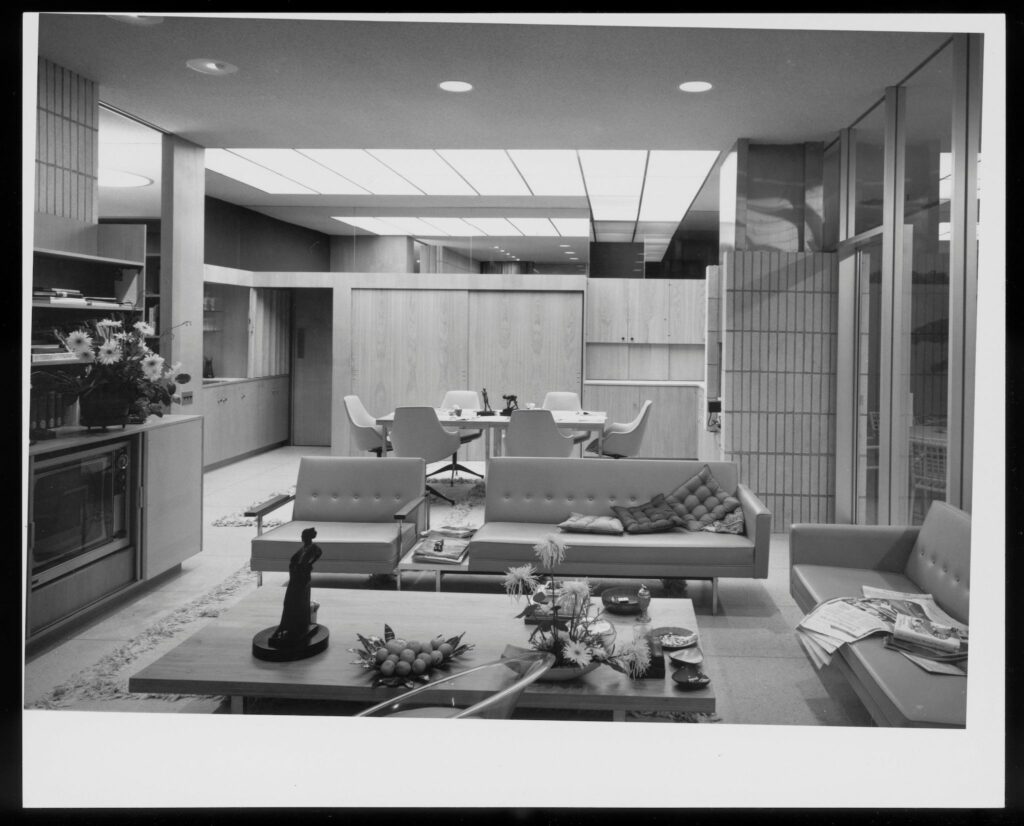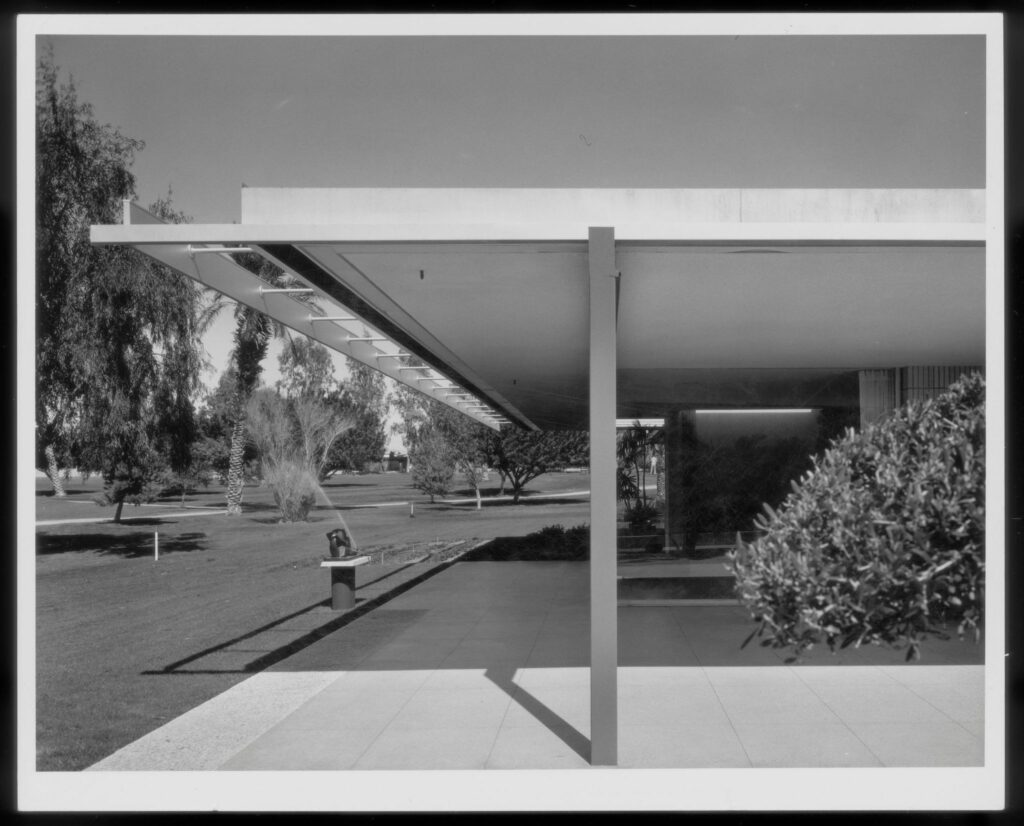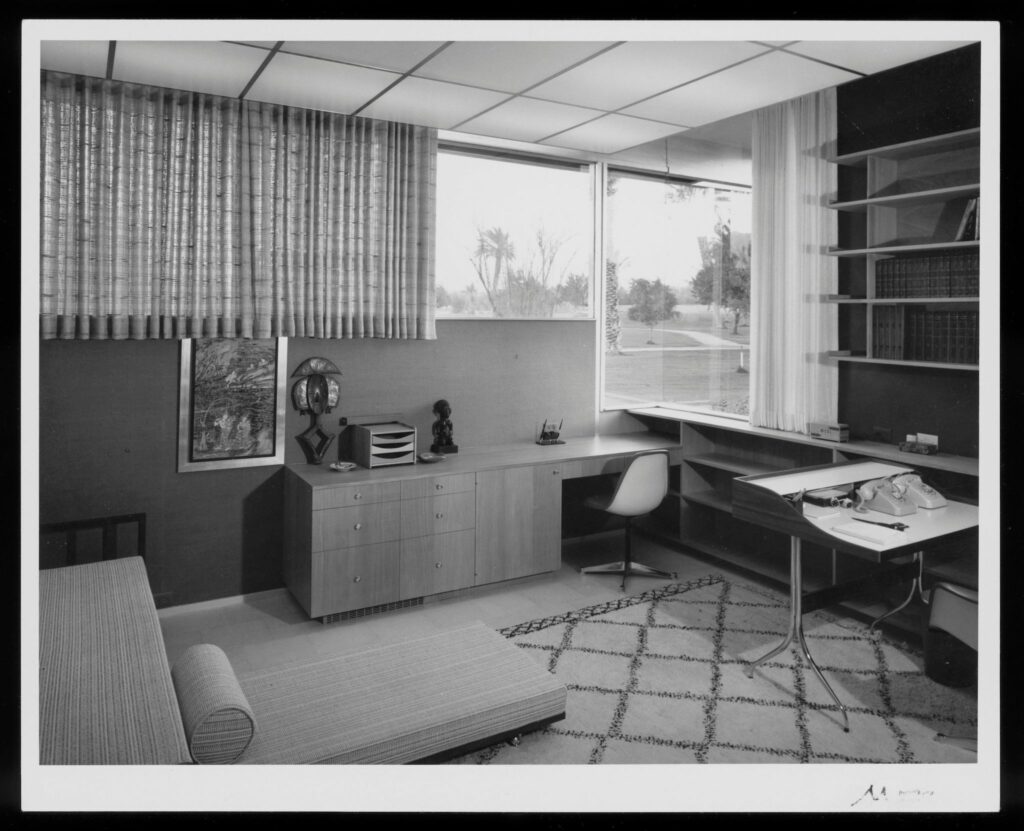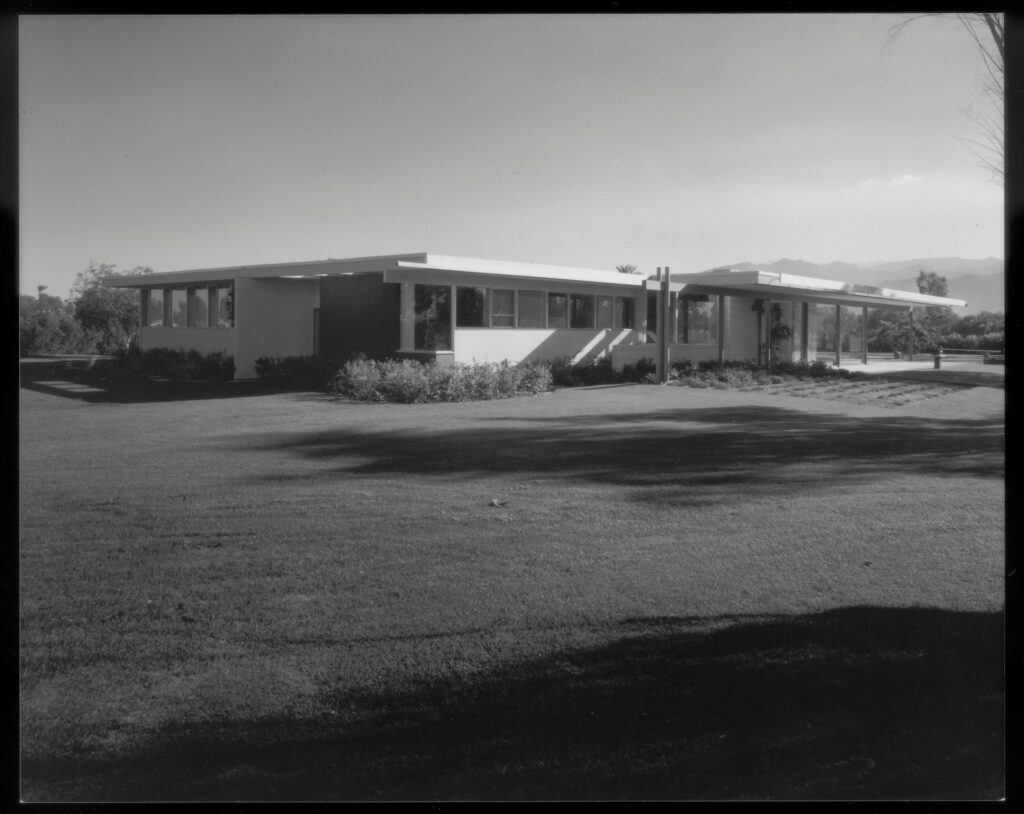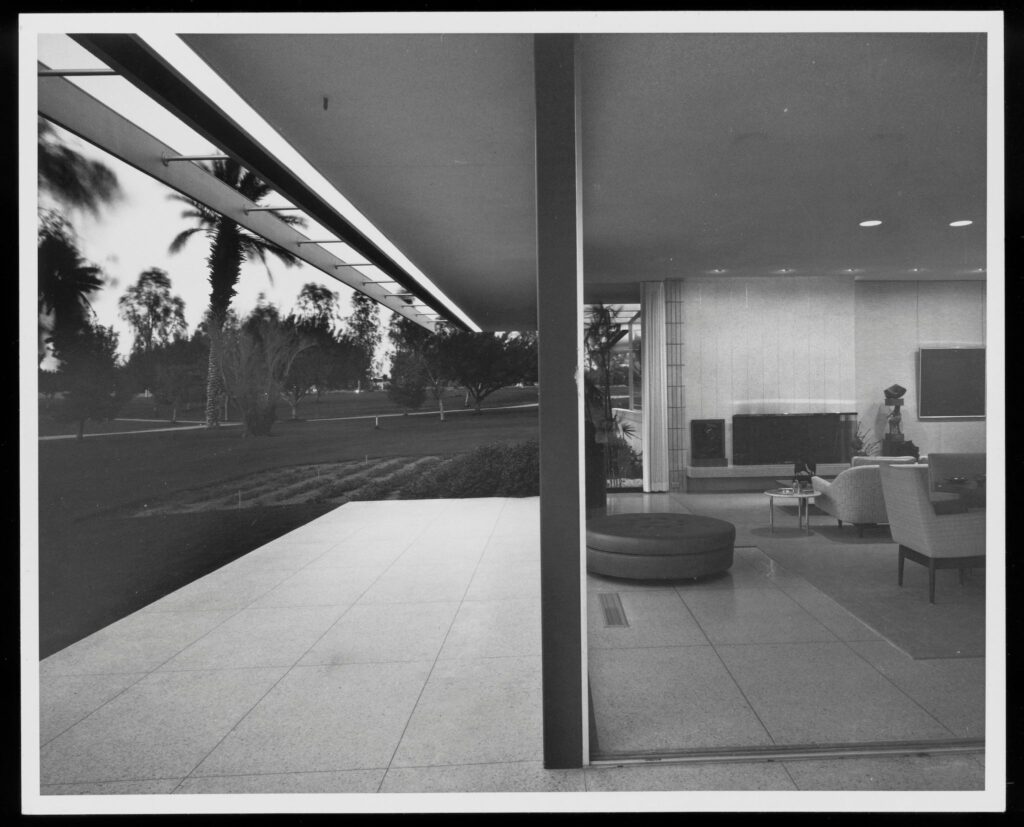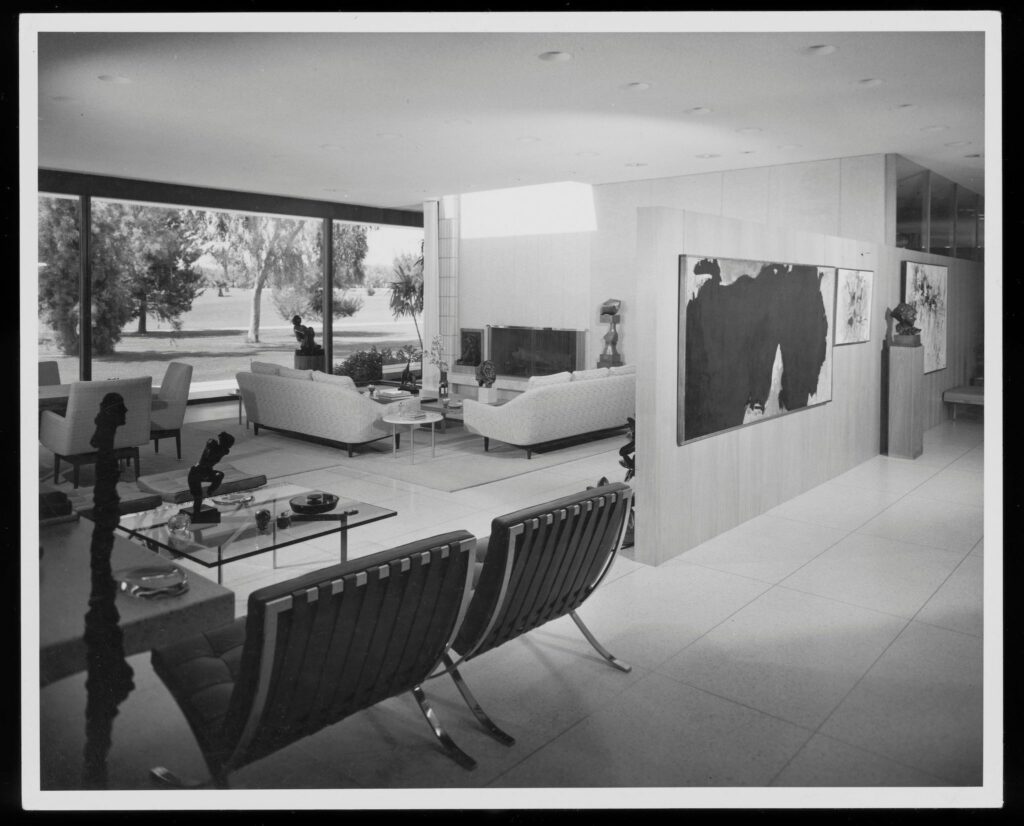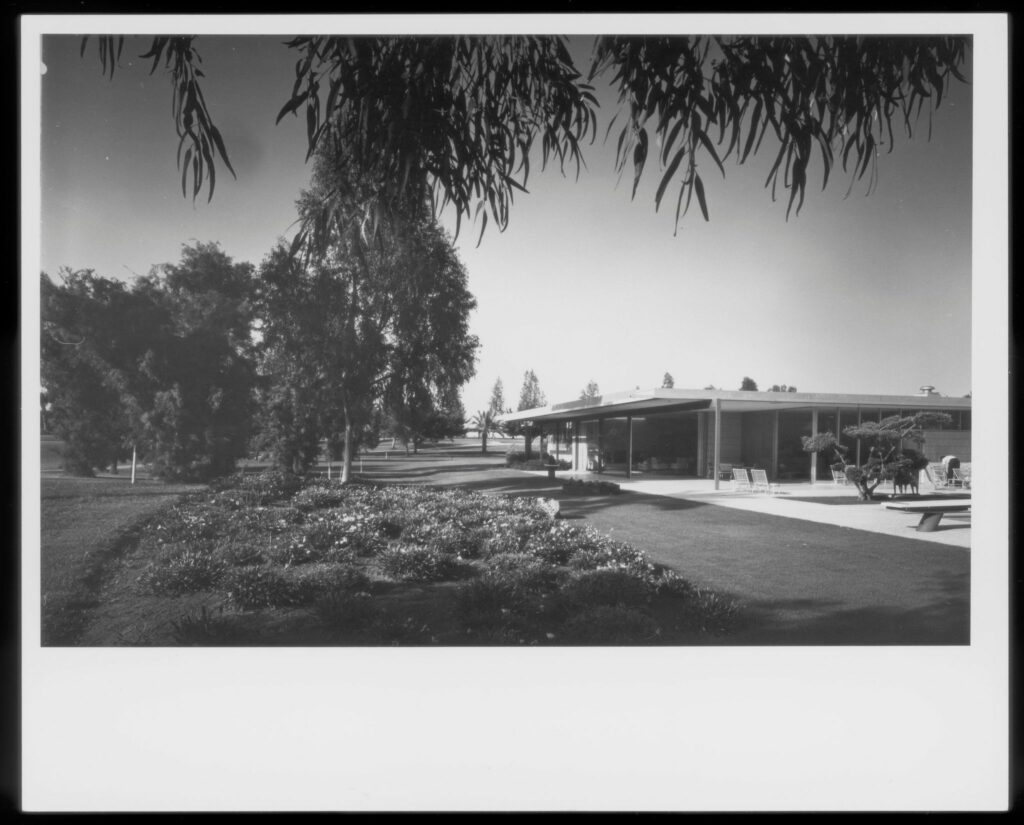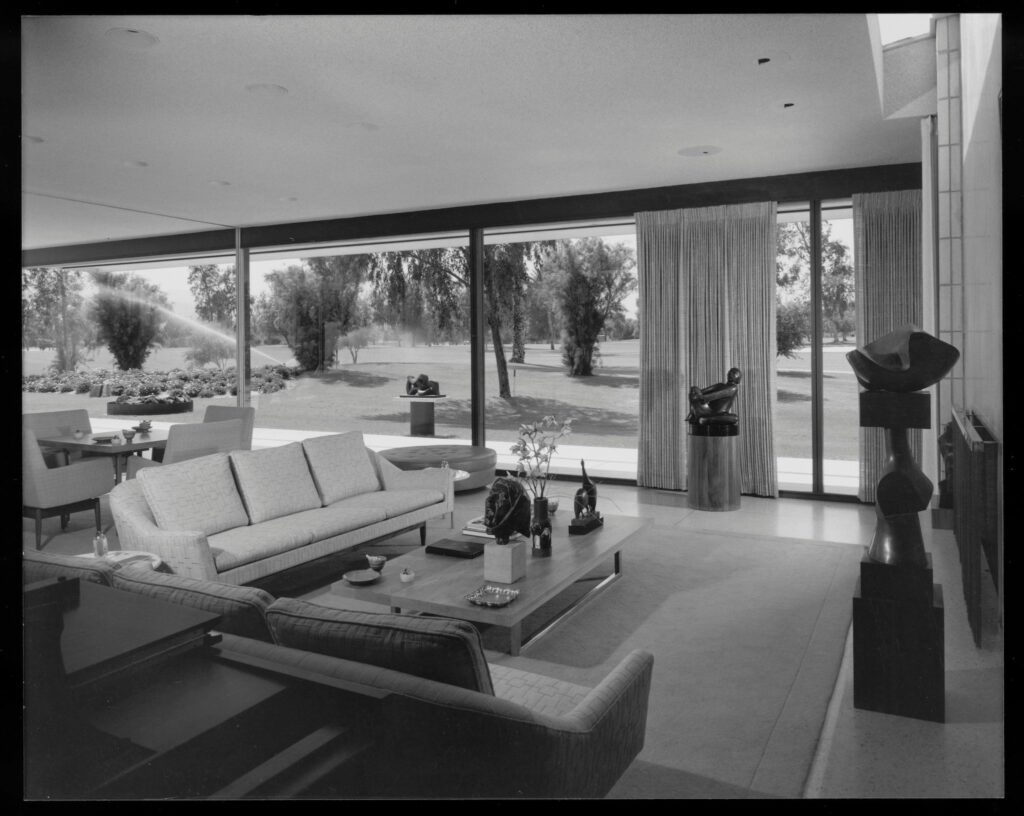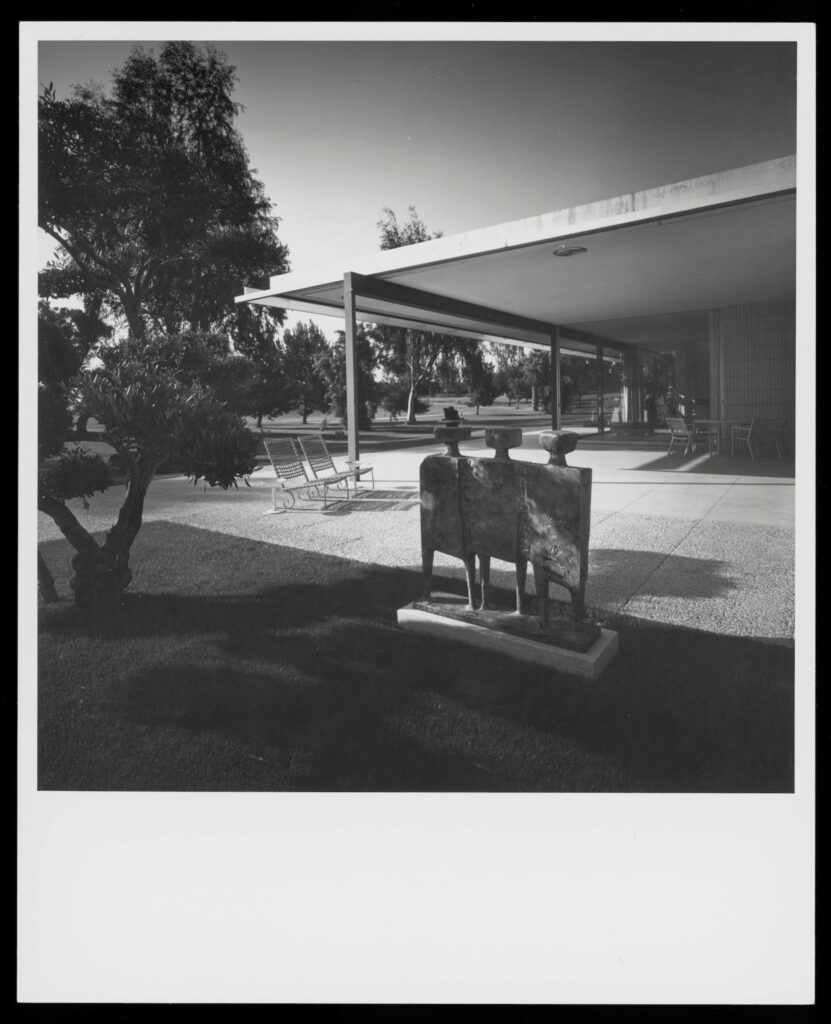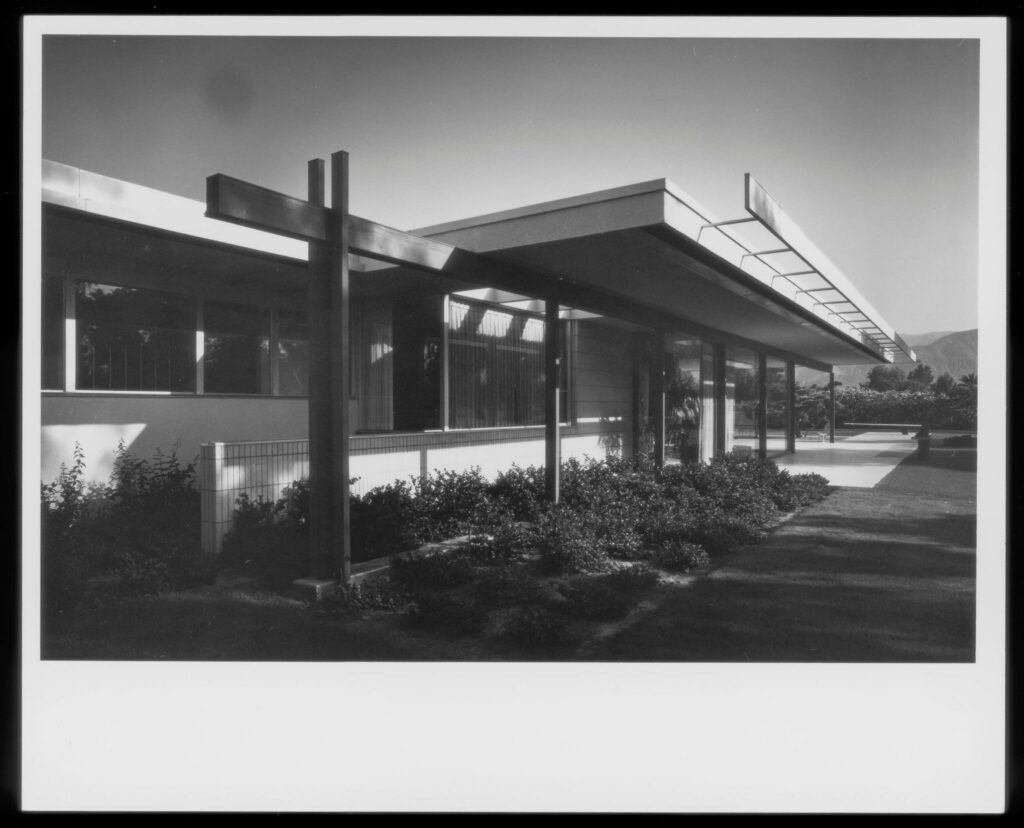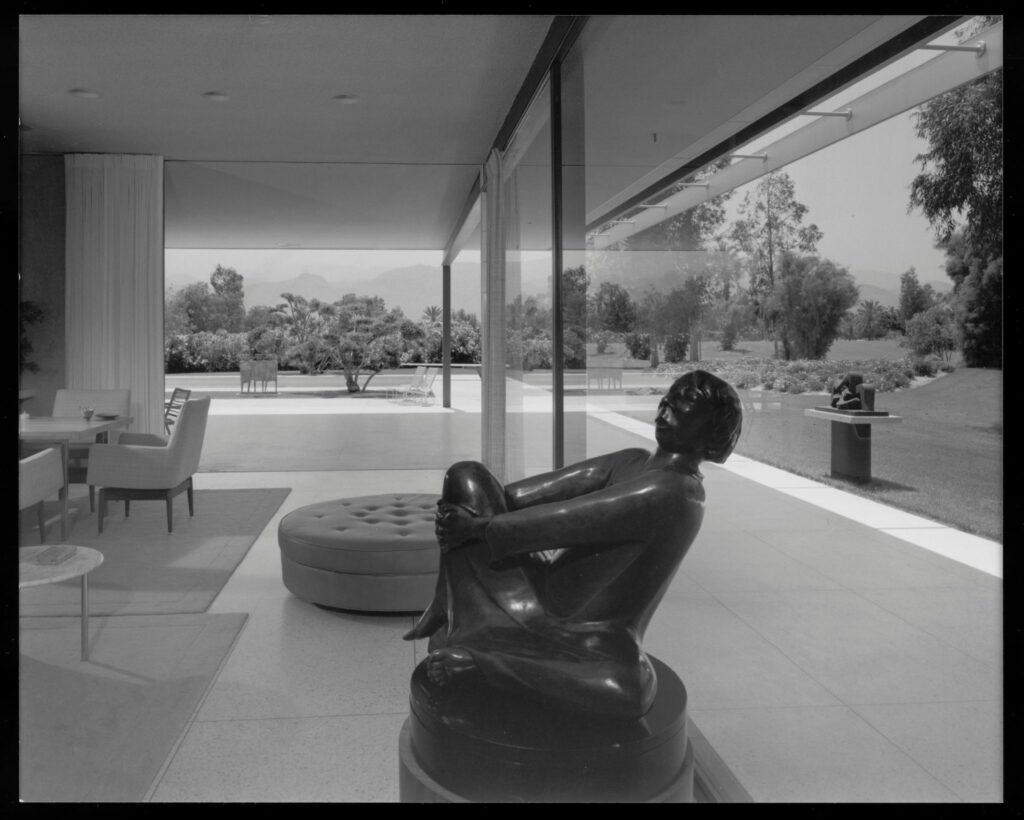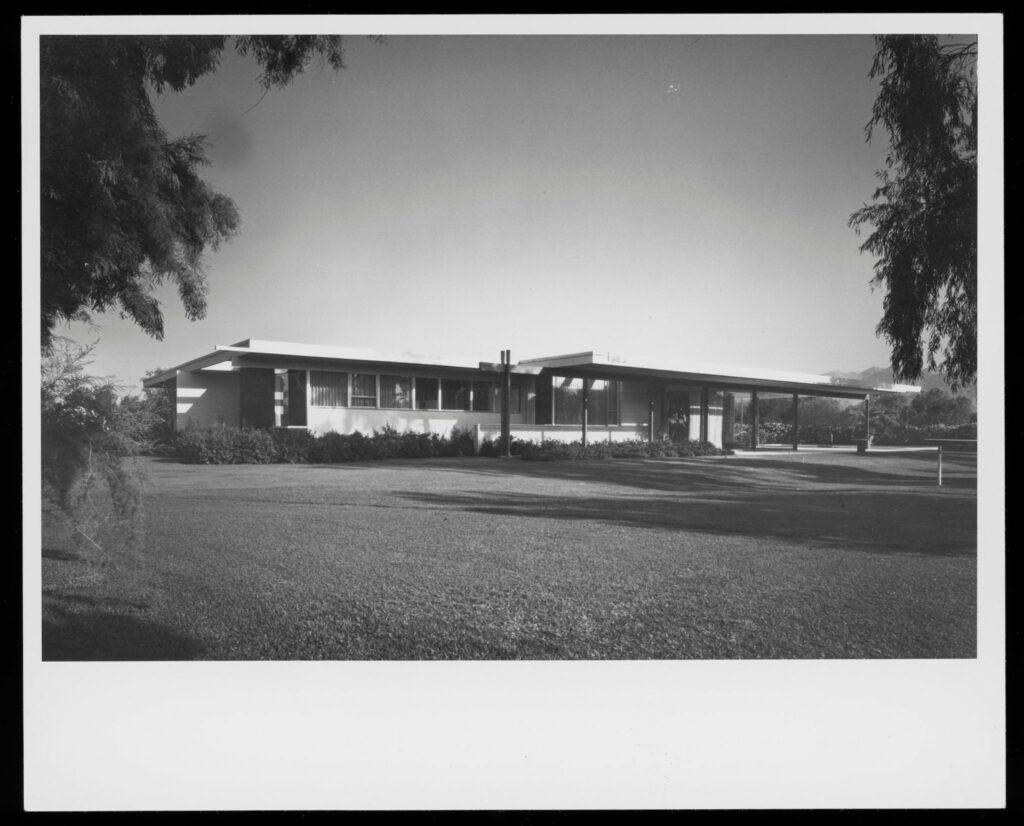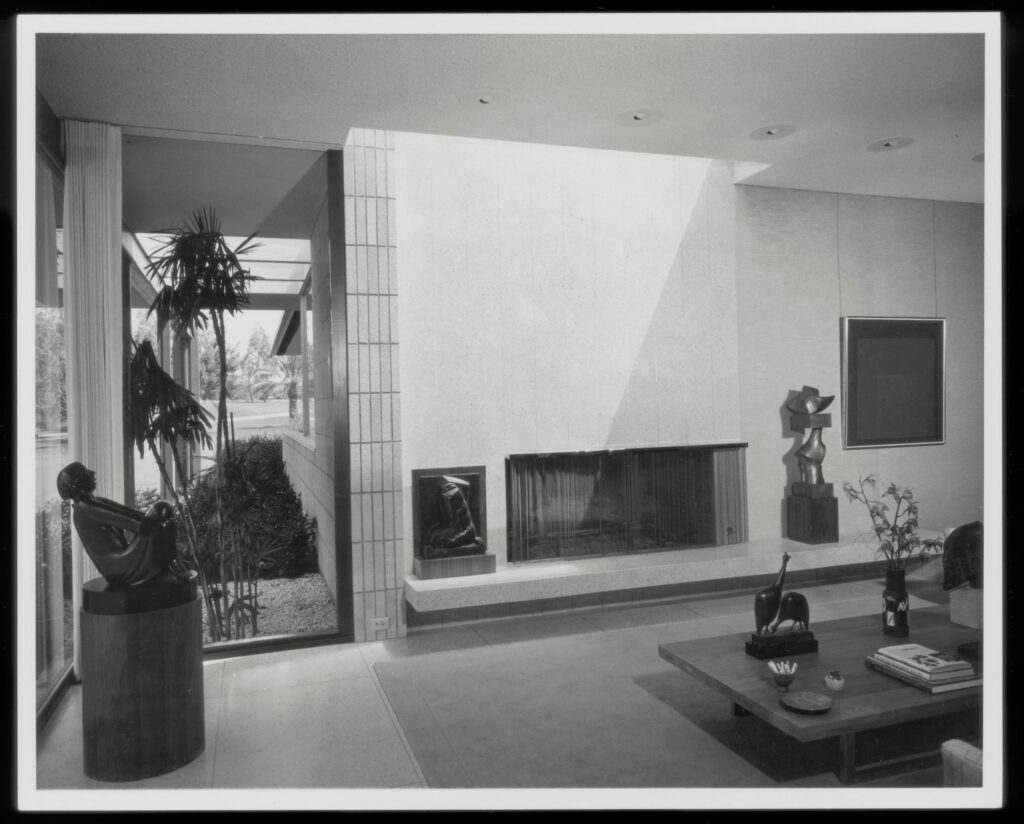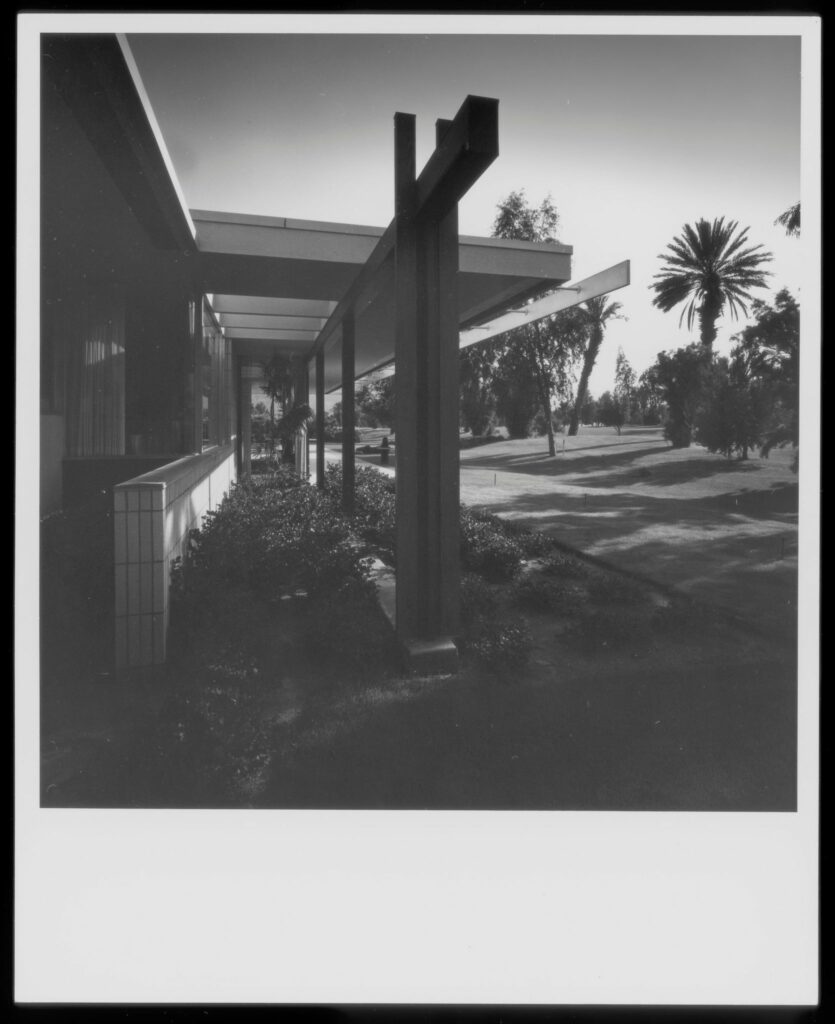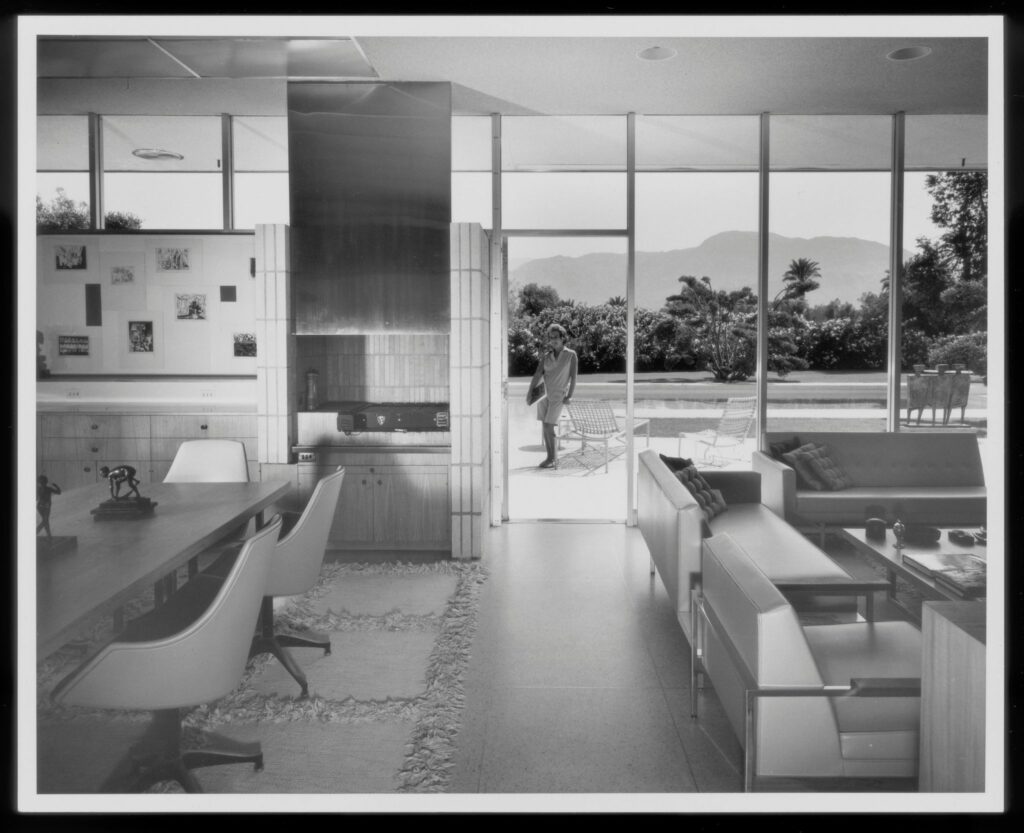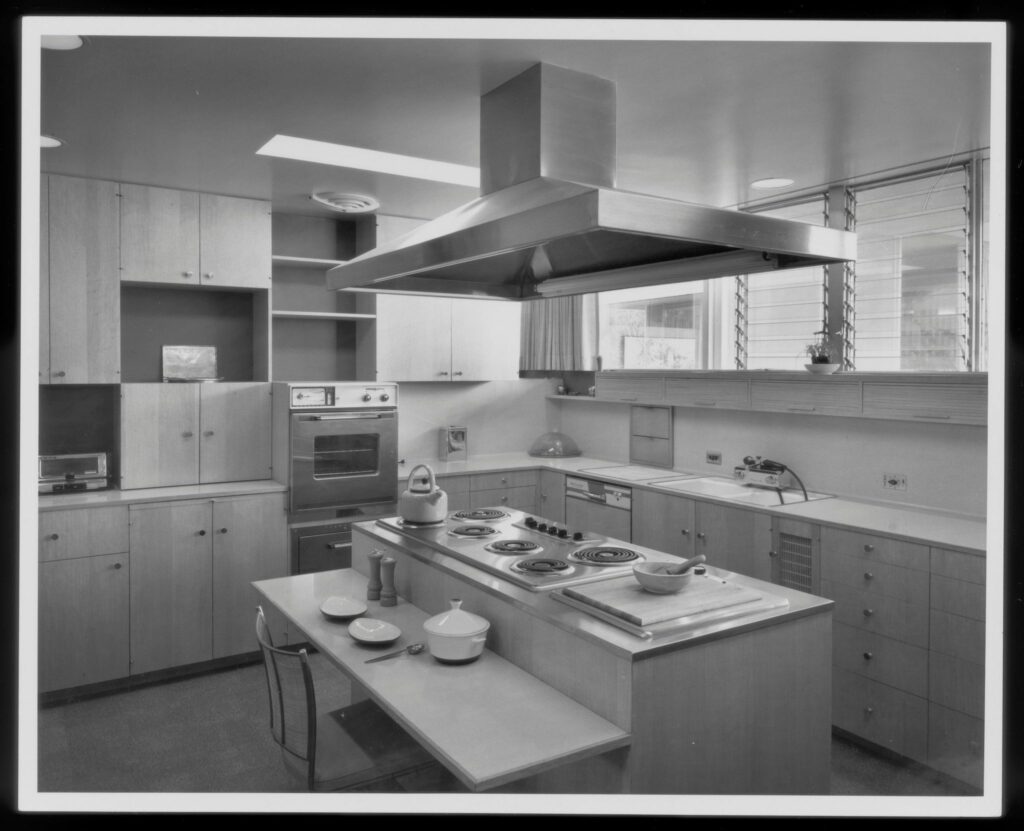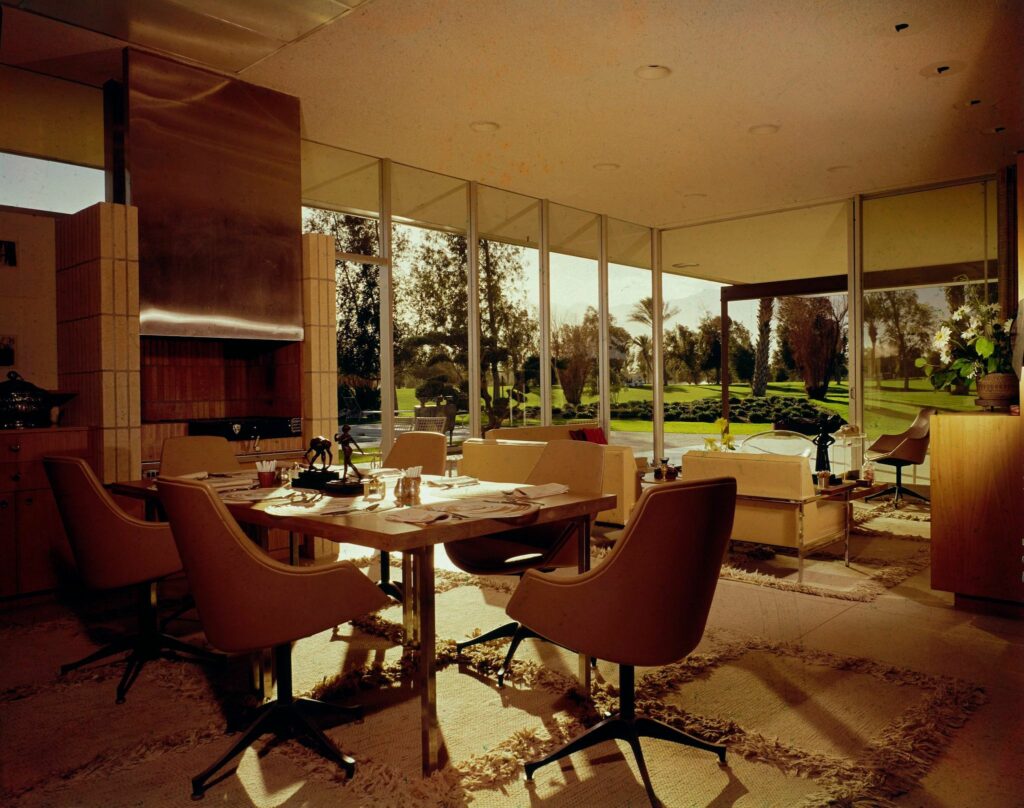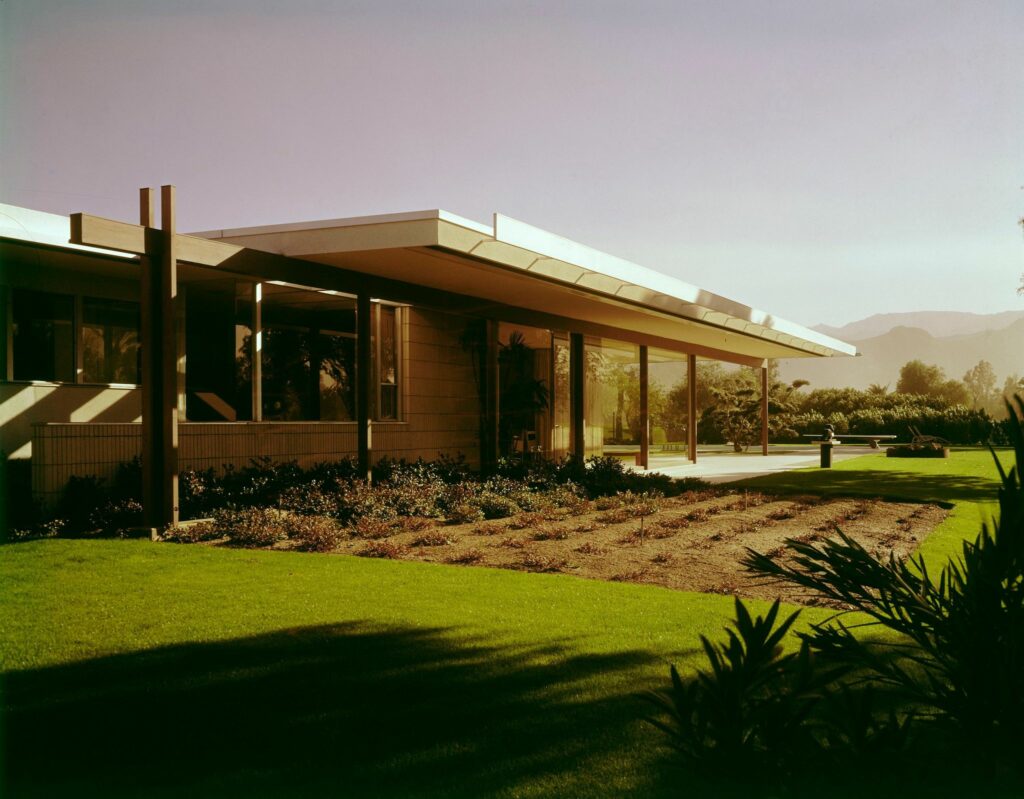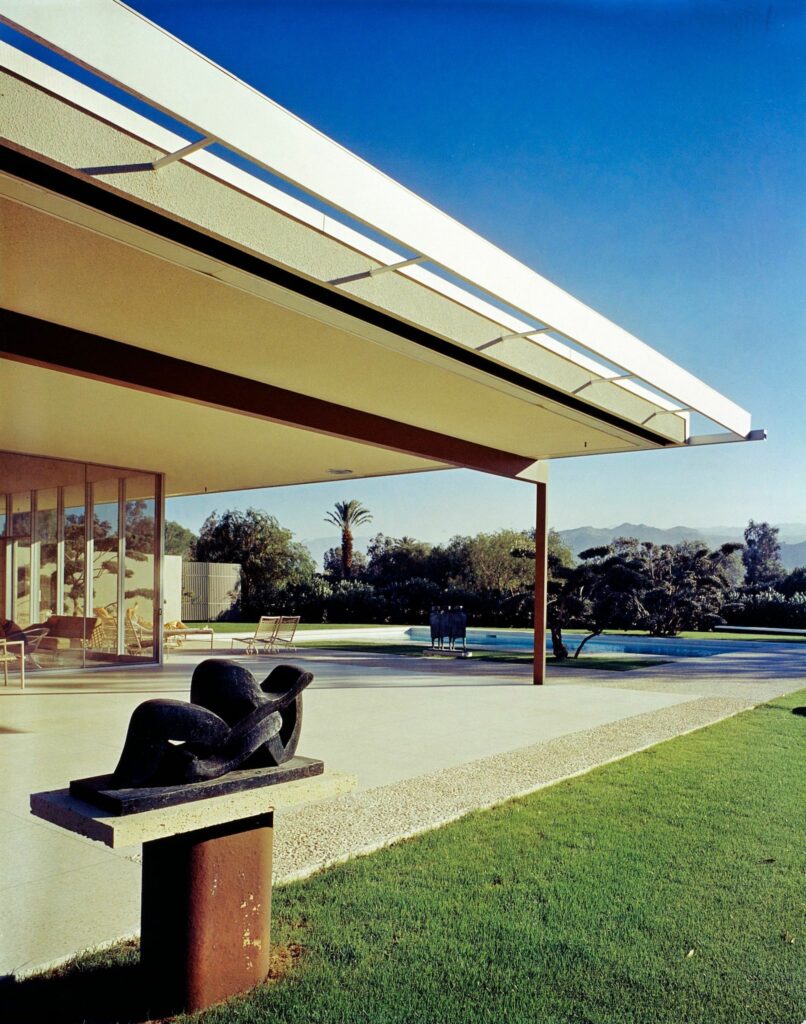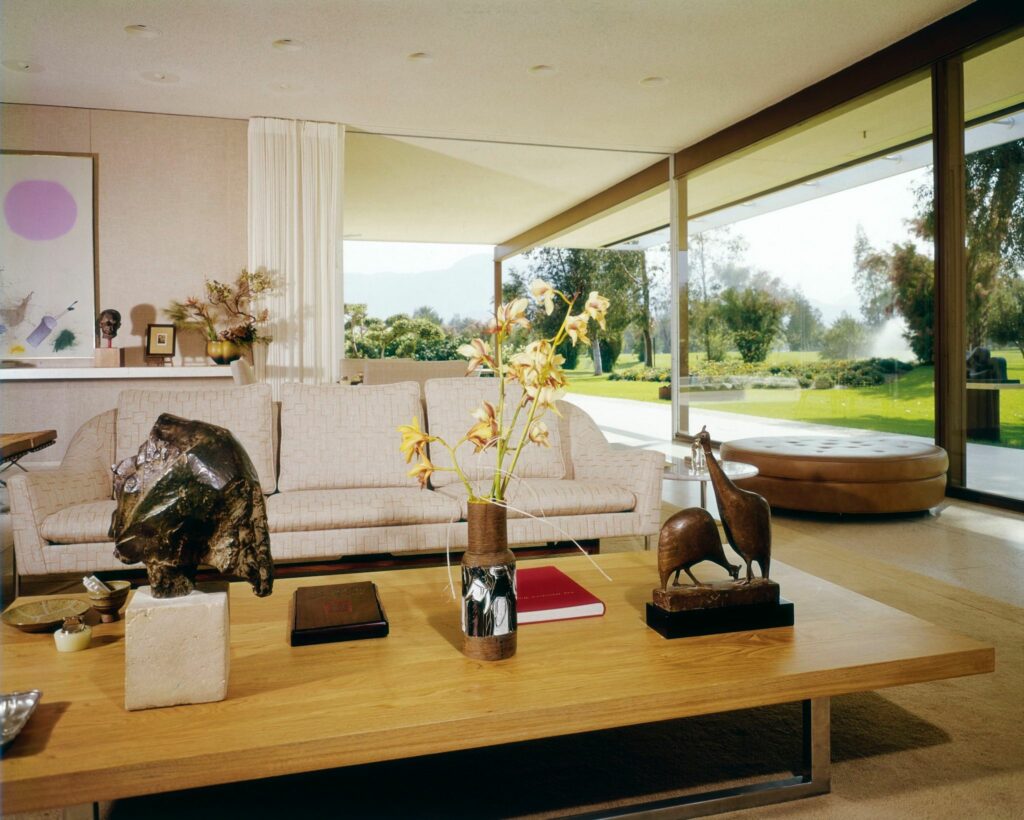Samuel and Louella Maslon House

Samuel and Louella Maslon House
Built after the Miller House and Kaufmann House, the Maslon House is less well known than Richard Neutra’s other work in Palm Springs. Charting a single horizontal line, its silhouette is set low to the ground, integrating with its surrounding lawn and the golf course beyond it. While the design for the Kaufmann House established a dichotomy between man-made forms and their natural desert environs, the Maslon House engages with this very different backdrop; its clean forms recall the manicured perfection of the golf course, the house’s roof line runs parallel to the infinite green plane behind it, and the exterior’s white color echoes the white sand traps found throughout the course.
The public enters a U-shaped compound, following a path in the courtyard between the two southeastern facing legs that passes over a reflecting pond. The path guides the viewers eyes, carefully directing their view away from bedrooms and towards the glass-walled living room. Each of the three wings has a different identity, one serving as the service wing, a second housing six guest bedrooms, and the final—which overlooks the golf course—including the living, family, and dining rooms as well as the master suite. Wide passageways integrate these different areas. At the northwestern corner of the plan, a protected terrace is accessible from the family and living rooms, and as the glass walls recede, the cantilevered overhang projects outward, hovering above a vast space with the support of only a single steel beam. In addition to the sizeable budget Neutra was working with to design luxurious interior features, the Maslons brought their impressive collection of twentieth century art to the home.
Adapted from Neutra – Complete Works by Barbara Lamprecht (Taschen, 2000), p. 418.
Project Detail
Year Built
1962
Project Architect
Richard Neutra
Client
Samuel and Louella Maslon
Location
Rancho Mirage, CA
Current Status
Demolished 2002
